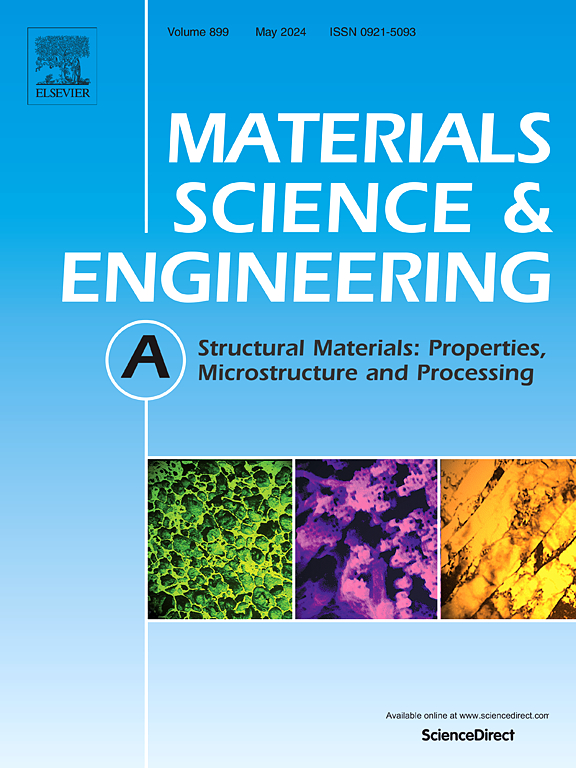Impressive improvement of high-temperature creep resistance of a β-solidifying γ-TiAl alloy
IF 6.1
2区 材料科学
Q1 MATERIALS SCIENCE, MULTIDISCIPLINARY
引用次数: 0
Abstract
β-solidifying γ-TiAl alloys are critical materials in turbine blade production due to their superior high-temperature properties and low densities. Ti-43.5Al-4Nb-1Mo-0.1B (known as TNM) is a representative alloy whose service temperature can reach 750 °C. However, due to many impact failures, its application in low-pressure turbine (LPT) blades was discontinued after a few years of commercial flight. Unfortunately, the specific reasons for the alloy's low damage tolerance have not yet been identified. We hypothesize that insufficient creep resistance may have contributed to the reported failures of TNM LPT blades during flights. In an effort to enhance creep resistance, we modified the TNM by adding small amounts of C and Si into a new alloy called TNM+ (TNM-0.3C-0.3Si) and replaced the original HIP and two-step heat treatment to a single post-processing treatment. We show that the new approach boasts the creep life by 3–4 folds. This significant improvement is attributed to three main factors: (1) C addition suppresses the β-segregations, enlarges the colony size, and increases the stabilization of α2 laths; (2) The precipitated silicides and α-segregations slow down the coarsening of β-segregation, hinder the dislocation migration, and increase the microstructural stability during the creep process; (3) By replacing HIP and subsequent two-step heat treatment with homogenization annealing, the formation of DP areas is retarded or avoided completely.
β-凝固γ-TiAl合金的高温蠕变性能显著提高
β-凝固γ-TiAl合金具有优异的高温性能和低密度,是涡轮叶片生产中的关键材料。Ti-43.5Al-4Nb-1Mo-0.1B(简称TNM)是使用温度可达750℃的代表性合金。然而,由于多次冲击失效,其在低压涡轮(LPT)叶片上的应用在商业飞行几年后就停止了。不幸的是,合金的低损伤容限的具体原因尚未确定。我们假设,蠕变阻力不足可能导致TNM LPT叶片在飞行中出现故障。为了提高抗蠕变性能,我们对TNM进行了改进,在一种名为TNM+ (TNM-0.3C-0.3Si)的新合金中加入了少量的C和Si,并将原来的HIP和两步热处理改为单一的后处理。结果表明,新方法的蠕变寿命提高了3-4倍。这主要归因于三个因素:(1)C的加入抑制了β-分离,增大了菌落大小,提高了α2板条的稳定性;(2)析出的硅化物和α-偏析减缓了β-偏析的粗化,阻碍了位错的迁移,增加了蠕变过程中微观组织的稳定性;(3)用均匀化退火代替HIP及其后的两步热处理,可以延缓或完全避免DP区的形成。
本文章由计算机程序翻译,如有差异,请以英文原文为准。
求助全文
约1分钟内获得全文
求助全文
来源期刊

Materials Science and Engineering: A
工程技术-材料科学:综合
CiteScore
11.50
自引率
15.60%
发文量
1811
审稿时长
31 days
期刊介绍:
Materials Science and Engineering A provides an international medium for the publication of theoretical and experimental studies related to the load-bearing capacity of materials as influenced by their basic properties, processing history, microstructure and operating environment. Appropriate submissions to Materials Science and Engineering A should include scientific and/or engineering factors which affect the microstructure - strength relationships of materials and report the changes to mechanical behavior.
 求助内容:
求助内容: 应助结果提醒方式:
应助结果提醒方式:


